A History of the County of Worcester: Volume 4. Originally published by Victoria County History, London, 1924.
This free content was digitised by double rekeying. All rights reserved.
'Parishes: Stanford on Teme', in A History of the County of Worcester: Volume 4, (London, 1924) pp. 341-345. British History Online https://www.british-history.ac.uk/vch/worcs/vol4/pp341-345 [accessed 19 April 2024]
In this section
STANFORD ON TEME
Stanforde (xi cent.); Stanford super Temede (xiii cent.); Stanford Washburne (xv cent.).
This parish is bounded on the east by the Teme, the land along its banks being liable to floods, and in the south-west the boundary is for the most part identical with that of the county. Habington describes it as rising 'from the fertyle bancke of the ryver of Teme towardes those woody hylles which on that syde inviron thys Shyre.' (fn. 1) The highest ground, 500 ft., is in the south-west, and the surface, which is undulating, slopes gradually to the River Teme. The road from Bromyard to Stourport runs through the north of the parish, crossing the Teme at Stanford Bridge. From this point a branch road runs south to Worcester.
The parish has an area of 1,272 acres, of which 32 are covered by water, and the rest is chiefly pasture land. (fn. 2) The soil is red marl and clay, the subsoil Old Red Sandstone.
The village is in the north of the parish, on the Stourport road, about a mile west of Stanford Bridge. A bridge, of brick and stone, with three arches, replaced a wooden one built in 1548 by Humphrey Pakington of Chaddesley Corbett. A brass plate asking for prayers for 'Humphrey Pakington, Esq. born in Stanford, who paid for the workemannship,' was transferred from the old to the new bridge. The brick bridge was replaced in 1797 (fn. 3) by a single-span iron one, which in its turn gave place in 1911 to a ferro-concrete bridge.
The church stands on high ground overlooking Stanford Park, about half a mile east of the original site in the park. The rectory, which was built during the incumbency of Dr. George Butt (1771–95), lies to the west of the church on the opposite side of the road, and there are cottages and several scattered farms in the village. Stanford Court, the seat of Sir Francis Salwey Winnington, bart., stands in the centre of a park of 75 acres containing a lake of 25 acres. It is a large [square-cornered capital C, laid on its side]-shaped mansion rebuilt in brick in 1886–8, a fire which occurred on 5 December 1882 having destroyed the whole of the previous house with the exception of the 18th-century north front. This front, which is ashlar-faced, is of two stories with sash windows, and has a semicircular bay window in the centre. Valuable collections of MSS. and paintings were lost in the fire. (fn. 4)
Noverton Farm, half-a-mile south of the church, is a mid-18th-century square brick house, two stories in height with an attic and tiled roofs, and retains its original dog-legged oak staircase. About a mile and a half south of Stanford Bridge and half-a-mile west of the Teme is a massive outcrop of tufa rock, called Southstone Hermitage, which occupies a commanding position overlooking a valley on the east. The rock is naturally hollowed out in the centre, and is fissured in all directions through the outer part of the rock becoming detached from the main mass. On the high ground above the rock is a 17th-century halftimber cottage.
A notable family connected with Stanford was that of Dr. George Butt, divine and poet, rector of Stanford 1771–95. His daughter, Mrs. Sherwood, wrote the well-known tales for children, the 'Fairchild Family' and 'Little Henry and his Bearer,' which have gone through innumerable editions, and his younger daughter Mrs. Cameron was also a well-known authoress. (fn. 5)
Among place names are Hull (xiv cent.) (fn. 6); Oram's Ground, Orlton's Crosse, Cockshout Gate, New Mill Gate, Share Hill, Baltentree, Betton's Hill (xvii cent.). (fn. 7)
MANORS
The manor of STANFORD ON TEME was held as two manors before the Conquest by Godric of Queen Edith. In 1086 Roger de Lacy held it as 2½ hides, and Hugh held it of him. (fn. 8) The overlordship passed with that of Bishampton (fn. 9) from the Lacys to the Verdons, Stanford being held of the honour of Weobley, and was assigned, after the death of Theobald de Verdon in 1316, to one of his daughters, Isabel wife of Henry Ferrers of Groby. (fn. 10) The fee was delivered in 1361 to William Ferrers son of Isabel, (fn. 11) but after this time the interest of the Ferrers family seems to have lapsed. The manor was returned in 1420 as held of Sir Walter Lucy as of the manor of Richard's Castle, (fn. 12) and in 1513 of Lord Clifford. (fn. 13)
Under the Lacys and Verdons the manor was held by the Washbournes of Little Washbourne. Walter de Craueley, who is returned as holding the fee at Stanford of the honour of Weobley from 1316 to 1361, (fn. 14) may have been a mesne lord between the Verdons and the Washbournes.
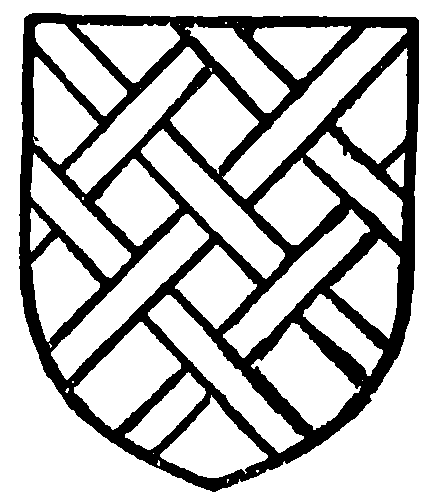
Virdon. Or a fret gules.
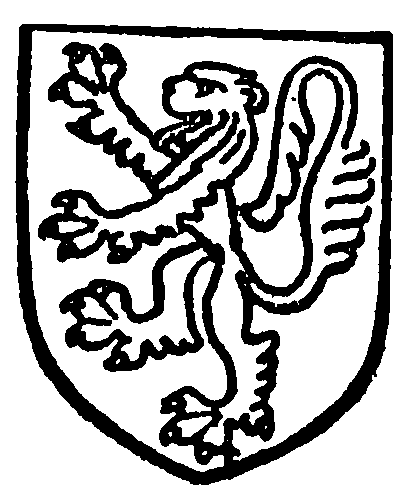
Lacy. Or a lion purpure.
William Washbourne was dealing with land in Stanford in 1255–6, (fn. 15) and was apparently succeeded shortly after by Roger Washbourne, who in 1257–8 bought a messuage, land and a mill of John de la Hulle. (fn. 16) The manor then followed the descent of Little Washbourne in Overbury (fn. 17) (q.v.) until the death of John Salwey in 1420. (fn. 18) He was then holding Stanford jointly with his wife Iseult daughter of John Washbourne by his first wife Joan, and left a son Humphrey, then nine years of age. (fn. 19) Iseult married secondly Thomas Harewell, who was holding Stanford in 1428 and 1431. (fn. 20) On the death of John Washbourne, Iseult's father, controversies arose as to the ownership of Stanford between Humphrey Salwey and his cousin Norman, John Washbourne's son by his second wife Margaret Poer. (fn. 21) The quarrel continued until after the death of Norman, and was finally settled in 1479, when by an award of the Duke of Clarence Stanford was assigned to Humphrey Salwey, and Little Washbourne to John Washbourne, Norman's son. (fn. 22) Humphrey died seised of Stanford in 1493, (fn. 23) having settled it in 1487 on his sons Thomas, Edmund and Walter in tail-male, (fn. 24) thus disinheriting his eldest son John. Prattinton gives an account of the circumstances which led to John's disinheritance. He was a devoted follower of George Duke of Clarence, and 'became lunatick after his horrid murder.' 'His loving and sorrowful father' kept him with him at Stanford, but in a lucid interval he stole away into Staffordshire and was enticed to marry Margery daughter of Hugh Erdswick, by whom he had three daughters, Cecily, Joyce and Margaret. (fn. 25)
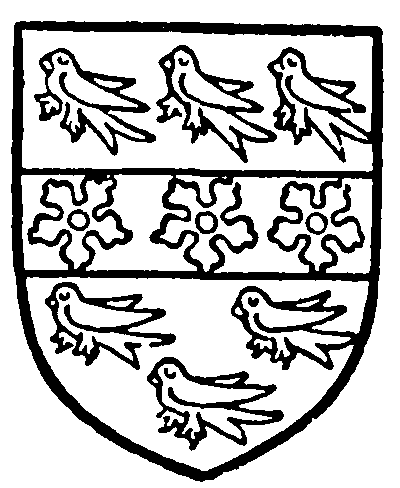
Washbourne. Argent a fesse between six martlets gules with three cinqfoils argent on the fesse.
Thomas Salwey died seised of the manor in 1513, (fn. 26) leaving a son Thomas under age. (fn. 27) In 1557 this Thomas, who had married Margaret daughter and co-heir of William Porter, (fn. 28) settled the manor in tail-male on his sons Arthur, Anthony, (fn. 29) Charles, Jasper, Matthew, George and Gabriel. (fn. 30) Thomas was succeeded between 1570 and 1603 by Arthur, (fn. 31) who was in turn followed before 1629 by his son Humphrey, who settled the manor in that year on his son Edward on his marriage with Dorothy daughter of Sir Erasmus Dryden. (fn. 32)
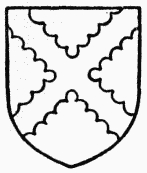
Salwey. Sable a salsire engrailed or.
Humphrey Salwey compounded in 1630–1 for not taking knighthood, (fn. 33) and was a zealous Parliamentarian, being appointed king's remembrancer by Parliament in 1644. He died in 1652 and was buried in Westminster Abbey, but his body was removed at the Restoration. (fn. 34) His son Edward succeeded at Stanford. (fn. 35) Edward, son of the latter, a barrister, died unmarried, when the estates passed to his three sisters. (fn. 36) One of them, Mary wife of Wroth Rogers, conveyed her third of Stanford in 1668 to her sister Honor Salwey. (fn. 37) Eventually the whole of Stanford passed to the third sister, Elizabeth wife of Sir Francis Winnington. (fn. 38) Sir Francis, who was knighted in 1672, was Solicitor-General to Charles II in 1674, M.P. for Windsor 1676–7, and lost his office and seat in Parliament in 1678–9 by his support of the Exclusion Bill. He represented the city of Worcester from 1679 to 1681, and died in 1700. (fn. 39) His eldest son Salwey married, in 1690, Anne sister of Thomas Lord Foley, and had issue Francis, who died at Vienna in 1718, and Thomas, who was holding the manor in 1719. (fn. 40) Thomas was member of Parliament for Worcester and paymaster-general, and died without issue in 1746, (fn. 41) when the manor descended to his cousin Edward Winnington, (fn. 42) who was holding it in 1748. (fn. 43) He was succeeded by his son Sir Edward, who was created a baronet in 1755, (fn. 44) and who married Mary daughter of John Ingram of Tickenhill. They settled the manor in 1776 on their son Edward, on his marriage with Anne daughter of Thomas Lord Foley. (fn. 45) Sir Edward died in 1791, and his son Sir Edward, the second baronet, in 1805. Sir Thomas Edward Winnington, third baronet, son of the latter, then succeeded, and was dealing with the manor in 1805 (fn. 46) and in 1810. (fn. 47) He was member of Parliament for Droitwich (1807–16 and 1831–2), Worcestershire (1820–30) and Bewdley (1832–7), and on his death in 1839 was succeeded by his son Sir Thomas Edward Winnington, fourth baronet, M.P. for Bewdley. He died in 1872, and was followed by his son Sir Francis Salwey Winnington, who is now lord of Stanford.
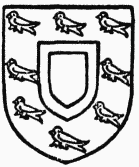
Winnington, baronet. Argent a voided scutcheon in an orle of martlets sable.
The manor of NOVERTON (Stanford, Stanford Sturmy, xiii cent.; Little Stanford, Overtone, xiv cent.; Noverton, xvi cent.) was held in 1086 by Osbern Fitz Richard as successor to Britric, a thegn of Queen Edith. (fn. 48) The manor became part of the honour of Burford, this overlordship being mentioned for the last time in 1376. (fn. 49) In 1404–5 it was held of Catherine Musard, lady of Stanford, (fn. 50) and in 1559 of the barony of Beauchamp. (fn. 51)
The manor was held in 1211–12 under the lord of Richard's Castle by John Wyard of Kyre Wyard, (fn. 52) but had passed by about 1235 to John Sturmy, (fn. 53) who in 1256 obtained a grant of free warren at Stanford. (fn. 54) The manor descended with Sutton Sturmy in Tenbury (q.v.) to the Cookseys, (fn. 55) and must have passed from them, with Orleton in Eastham (q.v.) to the Coningsbys, as Humphrey Coningsby was holding it in 1559. (fn. 56) From that time it followed the descent of Orleton, (fn. 57) passing with it to the Winningtons, (fn. 58) but references to it as a manor have not been found after 1670. (fn. 59)
A mill in Stanford was held by Roger Washbourne in 1257, (fn. 60) and in 1652 three water-mills belonged to the manor. (fn. 61) A free fishery was held with the manor by Thomas Salwey in 1570. (fn. 62)
SOUTHSTONE
SOUTHSTONE (Suleston, Sulstan, Sullestona, Solughston, Sulston, Soulston) with a carucate of land was given to the abbey of Evesham by Hugh son of Roger, of the inheritance of his wife Margery, at her request. (fn. 63) This grant was evidently made before 1206 when the infirmarer of the abbey was receiving half a mark from Southstone. (fn. 64) In 1353 the abbot and convent proved before the bishop their right to receive offerings at the image of St. John Baptist in Southstone chapel. (fn. 65) These offerings were made at the feast of St. John Baptist at a service ending with the drinking of water from the famous well of the rock, (fn. 66) and were valued at 40s. in 1535. (fn. 67) The value of the estate at Southstone at the Dissolution was 15s. 4d. (fn. 68) and in 1544 land described as at 'Soulston within the parish of Clifton' was granted with the fishery in Stanford 'about Soulston' to Sir William Barantyne and others. (fn. 69) Southstone afterwards passed to the Jeffreys of Ham Castle, and from them to the Winningtons of Stanford, in whose possession it still remains. (fn. 70) In a deed dated 1636 reference is made to the fairs and markets of Southstone. (fn. 71)
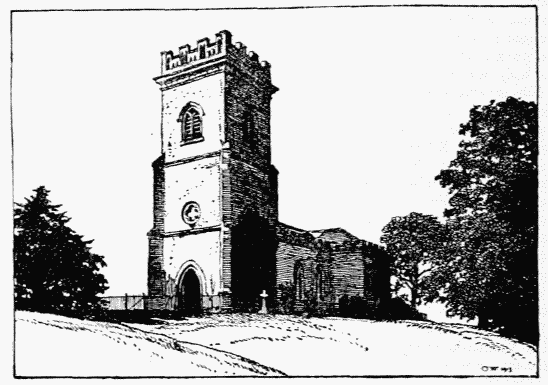
Stanford on Teme Church from the South-west
The church of ST. MARY consists of a chancel 29 ft. 9 in. by 23 ft., north transept 15 ft. 2 in. by 8 ft. 5 in., south transept 15 ft. 2 in. by 8 ft. 5 in., nave 29 ft. 6 in. by 23 ft., and a west tower, the lower stage of which forms the entrance porch, 13 ft. 6 in., by 13 ft. 2 in. These dimensions are all internal.
Of the original church nothing now remains but the foundations which lie beneath the lake in Stanford Park. The present church, which was consecrated in 1769, and is an interesting example of 18thcentury Gothic, is built of stone and brick plastered internally and externally, and is roofed with slates. The windows have pointed heads with cusped lights and geometrical tracery. There is one of three lights in the east wall, one of two lights in the north transept, four similar windows in the nave, and a single light in the south transept made by the removal in 1901 of the central mullion. There is a fourcentred arch between the nave and each transept and a flat arch over the sanctuary.
The tower is of three stages divided by stringcourses and has diagonal buttresses rising to the top of the second stage, while at the top is a deep moulded cornice and pierced embattled parapet. The lower stage is octagonal internally and has a pointed doorway in the west wall; the second stage is pierced on the west and south by quatrefoils, and the bell chamber has on each side a window of two pointed lights under a pointed head. All parts of the church have flat plaster ceilings, that of the nave being coved and enriched by a foliated cornice of acanthus and a decorated centre piece. The church was restored in 1894 when several alterations were made in the internal fittings. The font and the pulpit are modern. There are two 17th-century carved oak chairs in the chancel, and in a vestry formed in the north transept are an 18th-century table with curved legs and claw and ball terminations, and a chest of similar character and date.
In the north-east corner of the chancel is a fine alabaster table tomb with recumbent effigies to Humphrey Salwey of Stanford, who died in 1493, and Joyce his wife. This tomb was taken from the old church and put together here and has suffered somewhat in the process. Both the effigies have their hands in the attitude of prayer; the man is in plate armour and wears a collar of SS, his feet resting on a lion; his sword is broken away, but the hilt remains with the sacred monogram inscribed upon it. The lady wears a sleeveless cote and at her feet are two dogs, the head of one of which is broken off. These effigies have been reversed, their feet now pointing west. The two exposed sides of the tomb have cinquefoiled ogee-headed panels with crocketed labels, divided by panelled and pinnacled pilasters. Each of the six panels on the south side contains a kneeling male figure, perhaps intended for his sons. Each wears a tabard, and has a plain shield in front of him. In one of the two panels on the west side is a seventh male figure and in the other a group of three female figures, probably intended for his daughters. There is a Latin inscription in black-letter on the south side above the panels which, in the reerection, has not been correctly placed together; it originally read (fn. 72) 'Orate pro animabus Humfridi Salwey qu[ondam do]mini de Stan[ford] armigeri et Jocose uxoris eius qui predictus Humfridus quondam [marescallus curie regis Henrici sexti obiit anno Domini millesimo CCCCLXXXXIII] Dicta Jocosa obiit anno Domini millesimo CCCC . . .' On either side of the east window is a mural monument with a shield of arms; that on the north is to Sir Francis Winnington, who died in 1700, and that on the south, without date but of the early 18th century, to Salwey Winnington of Stanford Court and other members of the family. On the north wall of the chancel is a mural monument with arms to Sir Edward Winnington, bart., who died in 1791, and Mary his wife, 1784. On the south side of the chancel there is a large sarcophagus-shaped monument with a bust commemorating Thomas Winnington, who died in 1746. On the east wall of the south transept is a monument to Anne, daughter of Thomas Lord Foley and wife of Sir Edward Winnington, bart., who died in 1794; one on the north wall of the nave to the Rev. George Butt, D.D., who died in 1795; and one on the south wall of the nave to the Rev. Thomas King, sometime rector of the parish, who died in 1771, and his wives Ann, 1751, and Mary, 1782.
The tower contains a ring of three bells, and a small tolling bell, which were removed from the old church. The treble has the date 1673; the second is inscribed 'Abel Rudhall of Gloucester founder, 1753'; the third 'Sancte Mecahel ora pro nobis'; and the tenor 'Sancta Anna ora pro nobis.' The inscriptions on the last two bells, which date from about 1450, are in Gothic capitals with a crown over each letter and have the crowned heads and square fleur de lis stops often found in the county.
The communion plate consists of a silver cup and cover paten of 1571; a cup and cover paten of 1769, copies of the first set; a paten of 1722 'The gift of Helena Winnington 1725'; a paten of 1769 'The gift of Lady Winnington 1769'; a large flagon of 1718 given by Ann Winnington, wife of Salwey Winnington; and a flagon of 1769 'The gift of Lady Winnington at the consecration of the parish church of Stanford in Worcestershire anno Dom. 1769.' Both flagons are engraved with the sacred monogram and the Passion nails.
The registers previous to 1812 are as follows: (i) all entries, 1595 to 1754; baptisms and burials to 1812; (ii) marriages only 1754 to 1809.
ADVOWSON
The church of Stanford was returned in 1291 as not worth £4 annually. (fn. 73) The advowson was held with the manor of Stanford in 1316, (fn. 74) and has been so held ever since. (fn. 75) In 1535 the church was worth £7 4s. 5d. yearly, and paid an annual pension of 5s. to the priory of Great Malvern. (fn. 76) At a survey of 1656 (fn. 77) it was worth £30 yearly, and paid 16s. 8d. yearly to the vicar of Clifton.
The chapel of Little Stanford (afterwards Overton and Noverton) is mentioned in 1286, when 17s. from the land which Alexander the chaplain held in the parish of the chapel of Little Stanford was assigned to the vicar of Clifton. (fn. 78) Little Stanford was a chapelry of Clifton until 1532, when the bishop determined that for the future it should belong to the parish of Stanford, a pension of 13s. 4d. being reserved to the vicar of Clifton. (fn. 79) It was, however, returned in 1535 as a chapel of Clifton. (fn. 80) The chapel was already in ruins in the middle of the 17th century. (fn. 81)
Land in Overton called our Lady's Acre was granted in 1562 to Cicely Pickerell. (fn. 82) In the following year she was granted land in Stanford given for the maintenance of two lights in Stanford Church, and an annual rent of 4s. issuing from Soannes Close, Vicaries Close and Botrells in Little Stanford, given to superstitious uses. (fn. 83)
CHARITIES
The charity of Dame Anne Helena Winnington for the elementary parochial school, founded by will proved in 1883, consists of a sum of £575 12s. 11d. consols, producing £14 7s. 8d. yearly.
The same testatrix bequeathed £442 16s. 1d. consols, the annual dividends, amounting to £11 1s. 4d., to be applied in part in suitable gifts for necessitous poor at Christmas and St. Thomas's Day, and in part for the clothing club. In the event of the clothing club being discontinued, its share was to be applied for the parochial school.
